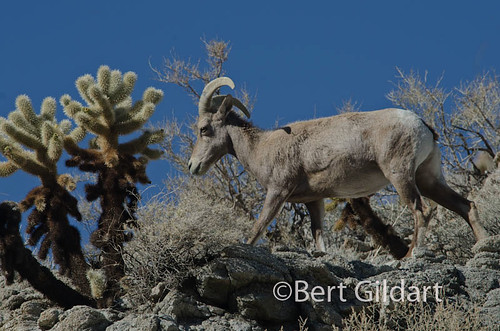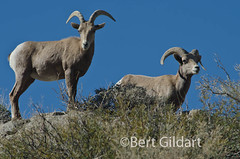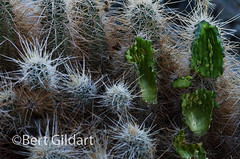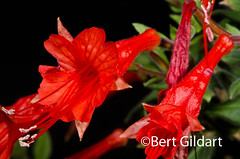Surviving In a Land Where Everything Either Sticks, Stings or Bites
©Bert Gildart: In a land where everything either sticks, stings or bites, Bill (see previous post) and I decided we would return to the Moonlight Canyon trail and see if we could learn more about what — and how — sheep eat. Can they actually digest thorns?
Essentially because this area in Anza Borrego Desert State Park is so rugged, it is, in fact, ideal sheep country, and that morning we’d watched as a band of about five desert bighorn sheep – all young rams – had munched on surrounding vegetation. Food they consumed grew close to the ground and from our vantage we could not see what it was. Everything here seemed covered with thorns, and we wondered how they managed.
A DIET OF CACTI?
The sheep had moved on so Bill and I decided to climb to the prominence on which they’d been watching the world around them. Here, we found much cholla, and every single one contained extraordinarily sharp thorns.
Sheep munch away the sharp thorns to exposure the underlying fruit of the cholla. Apparently, it is all palatable.
Mind you, these were brutally sharp thorns, and as we had climbed, several had lodged in the soft fabric of my jeans and then penetrated to jab me in a particularly painfully manner. This was the food of our sheep, and as we examined the plants, we found no discarded thorns. Apparently, they had consumed not only the fruit of the cacti, but also the thorns.
MICRO CLIMATES
Bill and I returned to the trail and his attention turned to the various micro-climates contained along the Moonlight Canyon trail. He asked me if I’d noted the various rock pockets where temperatures fluctuated, and it was true. Here in this twist-y canyon where the aspect changed markedly, we found not only pockets of cold, but also pockets of relative warmth. Apparently, the warm pockets provided conditions appropriate for the season’s last brave flowering species.
Bill said he believed the flower was a fuchsia. With its long red sepals and petals and very conspicuous stamen it was a colorful plant, necessary perhaps to attract insects for late season pollination. It was a perfect photographic specimen so I attached a 105mm macro lens, set up a tripod, and then illuminated it with two strobes manually (250sec, f32) set to overwhelm ambient light, so producing the black background.
Janie and I left Agua Calienta late in the day, commenting over and over that we’d had a marvelous day, filled with good friends, flowers, birds, and wildlife. How could it get any better?
———————————————————————————————-
THIS TIME THREE YEARS AGO:
ADS FROM AMAZON AND GOOGLE AUGMENT OUR TRAVELS:







December 18th, 2011 at 1:17 pm
Great posts Bert… and yes, it was a marvelous day thanks to you and Janie!
October 25th, 2012 at 1:35 pm
[...] the heat of the day, Bert and I hiked the Moonlight Canyon Trail, where we had photographed Bighorn sheep last December. In my next post I’ll show Bert [...]